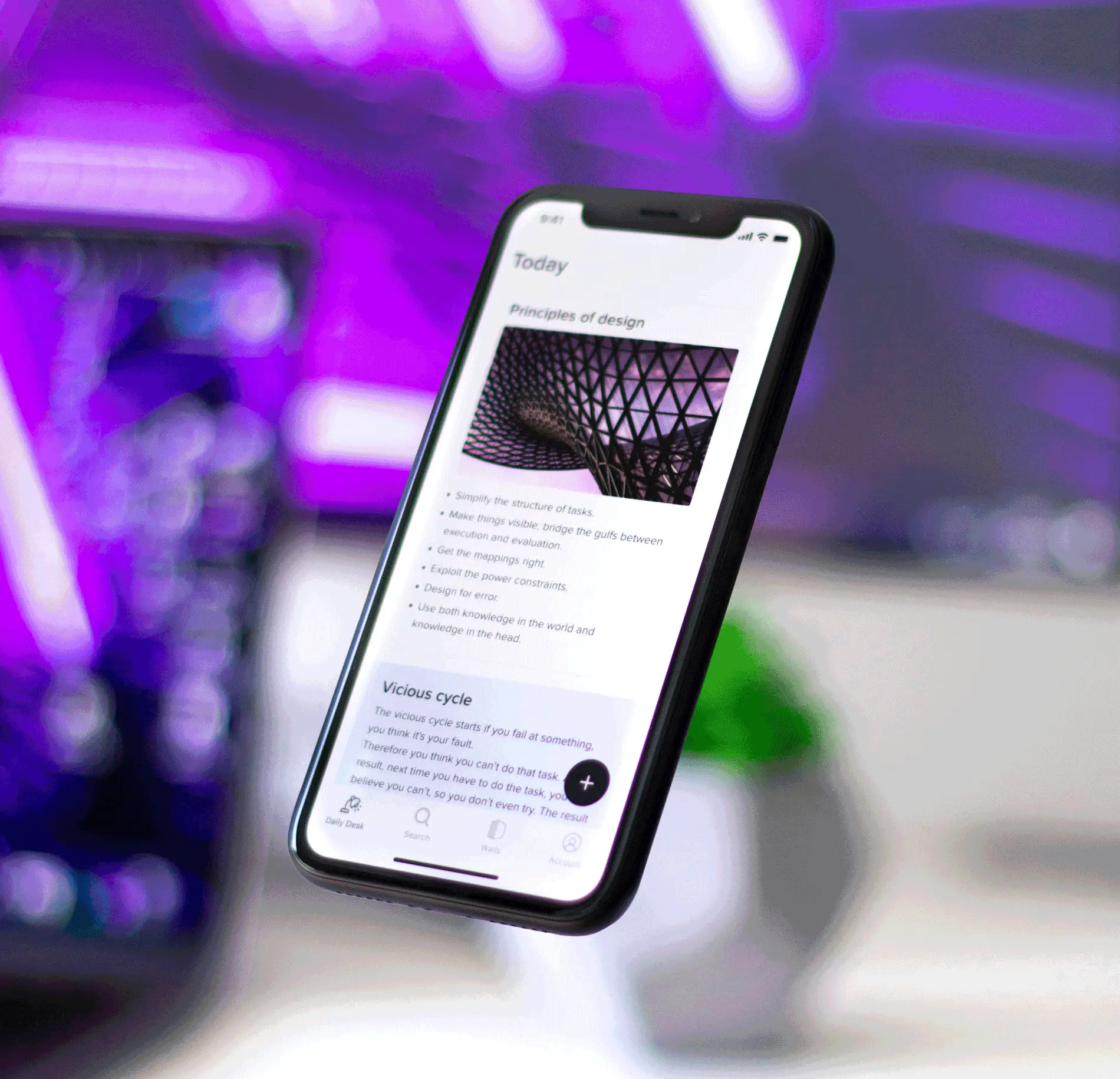Designing a mobile app isn’t just about aesthetics; it’s about creating an intuitive, engaging experience that keeps users coming back. With mobile app usage surging—over 6.8 billion smartphone users globally as of 2024—getting your app’s design right is crucial.

Designing a mobile app isn’t just about aesthetics; it’s about creating an intuitive, engaging experience that keeps users coming back. With mobile app usage surging—over 6.8 billion smartphone users globally as of 2024—getting your app’s design right is crucial.
Let’s break down the key elements that contribute to a seamless user experience and ensure your app stands out in a crowded market.
In the early days of mobile apps, design was often secondary to functionality. However, as technology and user expectations have evolved, design has become a critical component of app success.
Today, mobile app design is about creating a cohesive experience that seamlessly blends usability with aesthetics.
User experience (UX) is not just a buzzword; it’s the foundation of a successful app. A well-designed app can lead to higher user satisfaction, increased engagement, and better retention rates.
According to Forrester, companies that prioritize UX see a 5x higher ROI compared to those that don't. Understanding what makes an app enjoyable to use can set your app apart from the competition.
The foundation of exceptional app design starts with understanding your users. Conduct thorough research to uncover their needs, preferences, and pain points. Use surveys, interviews, and user testing to gather actionable insights. Companies that prioritize user experience see a 5x higher ROI compared to those that don’t. This means investing time in understanding your audience pays off.
Navigation should be a breeze. Users should find what they need quickly without getting lost. Design intuitive menus, use clear labels, and ensure that key features are easy to access. Familiar icons and gestures help users navigate effortlessly. A well-structured app reduces frustration and enhances user satisfaction.
With devices ranging from tiny smartphones to large tablets, your app must look and function well on all screen sizes. Implement responsive design principles to adapt your layout to different screen dimensions. According to Statista, over 6.8 billion people use smartphones globally. This makes optimizing for various devices not just beneficial but essential.
Users expect apps to be fast. Slow load times can lead to frustration and app abandonment. Optimize performance by minimizing file sizes, using efficient coding practices, and leveraging caching strategies. A fast app keeps users engaged and coming back for more.
Consistency in visual design helps reinforce your brand and creates a cohesive experience. Stick to a unified color scheme, typography, and iconography throughout your app. This not only enhances brand recognition but also delivers a polished, professional look. Consistent design elements make your app feel more reliable and trustworthy.
Create a user interface (UI) that’s both appealing and functional. Avoid cluttered screens and prioritize essential features. Effective use of whitespace helps create a clean, organized layout that guides users naturally through your app. A well-designed UI enhances usability and overall user satisfaction.
Designing for accessibility means ensuring your app is usable by everyone, including those with disabilities. Incorporate features like voice control, screen readers, and high-contrast modes. Web Content Accessibility Guidelines (WCAG) provide comprehensive standards for making digital content accessible.
Conduct usability testing with a diverse group of users to identify and address accessibility issues. This approach helps ensure that your app provides a positive experience for all users, regardless of their abilities.
Interactive elements, such as animations, transitions, and microinteractions, can make your app feel more dynamic and engaging. These features provide feedback and enhance user interactions, making the app experience more enjoyable. Subtle animations can also guide users and make the app more intuitive.
Personalize the user experience based on user preferences and behaviors. Offering personalized content and recommendations can make users feel more connected to your app. For example, Spotify’s music recommendations are tailored to individual listening habits, enhancing user engagement.
Security is paramount in mobile app design. Implement strong security measures to protect user data and privacy. Use encryption, secure authentication methods, and comply with data protection regulations such as GDPR and CCPA. Ensuring user data is safe builds trust and credibility.
Be transparent about your app’s privacy policies and data handling practices. Clearly communicate how user data is collected, used, and protected. Transparency helps build trust and reassures users that their information is in good hands.
An app’s lifecycle doesn’t end with its launch. Regular updates and maintenance are crucial for fixing bugs, improving performance, and adding new features based on user feedback. Monitor app reviews and analytics to identify areas for improvement and address issues promptly.
Encourage users to provide feedback and use it to guide future updates. An active dialogue with users helps you stay aligned with their needs and preferences, ensuring your app continues to deliver a valuable experience.
Designing a mobile app that provides a seamless user experience involves understanding your users, ensuring responsive design, maintaining visual consistency, prioritizing accessibility, and focusing on security. Engaging with users through interactive elements and personalization, along with regular updates, will keep your app relevant and effective.
Ready to enhance your mobile app design? Reach out to us now and we’ll help you design an exceptional app experience.